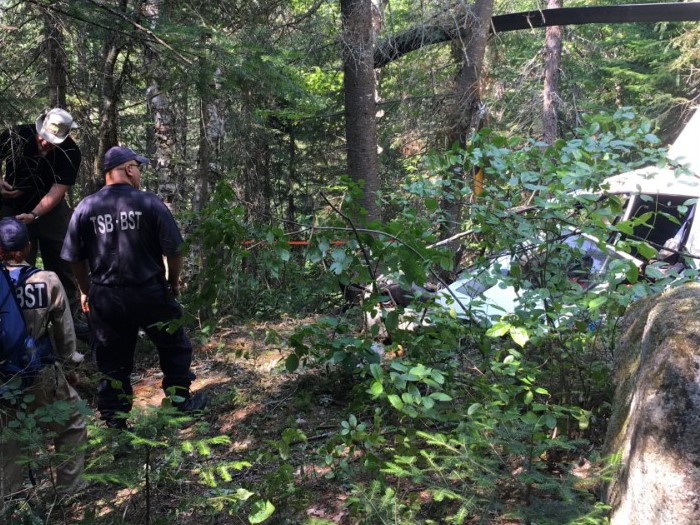Main rotor blade failure in flight
Robinson R44 (helicopter), C-FJLH
Lac Valtrie, Quebec
The occurrence
On , a privately registered Robinson R44 helicopter (registration C-FJLH, serial number 2044) was conducting a day visual flight rules flight from Lac de la Bidière, Quebec, to Sainte-Sophie, Quebec, with 1 pilot and 1 passenger on board. The aircraft never arrived at its destination. It was reported missing at 1158 Eastern Daylight Time the following day to the Joint Rescue Coordination Centre in Trenton, Ontario, which began the search. No emergency locator transmitter signal was detected.
The Canadian Armed Forces launched an air search with the assistance of several aircraft, including Sûreté du Québec and Canadian Coast Guard aircraft, and volunteer air search and rescue organizations in Quebec and Ontario. A ground and water search was also undertaken. The aircraft was found on 25 July, 14 days after it was reported missing, in a wooded area near Lac Valtrie, Quebec. The occupants were found dead. There was no fire. The aircraft was destroyed.
Safety communications
Safety advisories
A19Q0109-D1–A1: Failure of the Kannad 406 AF-compact emergency locator transmitter switch locking system
Media materials
News release
Main rotor blade failure in flight caused the fatal impact with the ground near Lac Valtrie, Quebec, in 2019
Read the news release
Deployment notice
Video and audio materials
Release of investigation report A19Q0109 – Lac Valtrie
A19Q0109: Video Report
Investigation information
Download high-resolution photos from the TSB Flickr page.
Class of investigation
This is a class 3 investigation. These investigations analyze a small number of safety issues, and may result in recommendations. Class 3 investigations are generally completed within 450 days. For more information, see the Policy on Occurrence Classification.
TSB investigation process
There are 3 phases to a TSB investigation
- Field phase: a team of investigators examines the occurrence site and wreckage, interviews witnesses and collects pertinent information.
- Examination and analysis phase: the TSB reviews pertinent records, tests components of the wreckage in the lab, determines the sequence of events and identifies safety deficiencies. When safety deficiencies are suspected or confirmed, the TSB advises the appropriate authority without waiting until publication of the final report.
- Report phase: a confidential draft report is approved by the Board and sent to persons and corporations who are directly concerned by the report. They then have the opportunity to dispute or correct information they believe to be incorrect. The Board considers all representations before approving the final report, which is subsequently released to the public.
For more information, see our Investigation process page.
The TSB is an independent agency that investigates air, marine, pipeline, and rail transportation occurrences. Its sole aim is the advancement of transportation safety. It is not the function of the Board to assign fault or determine civil or criminal liability.
